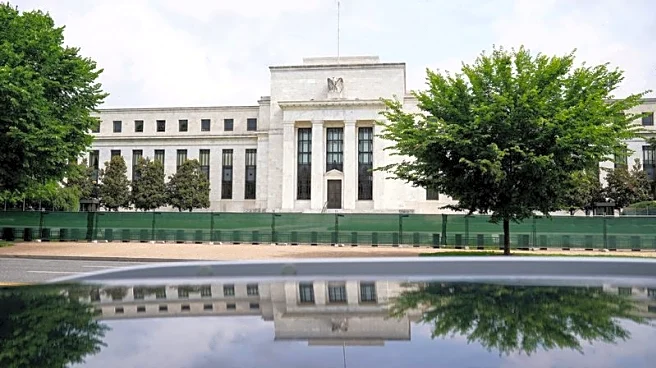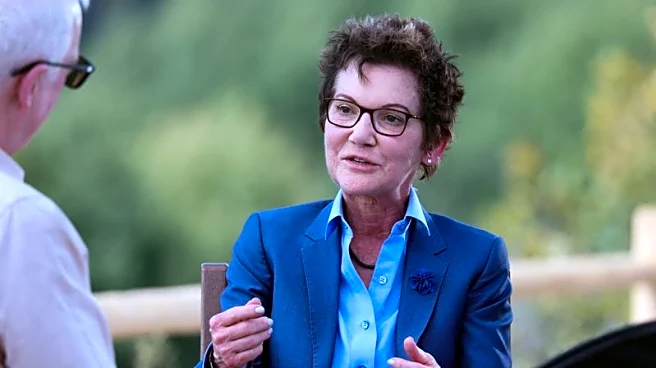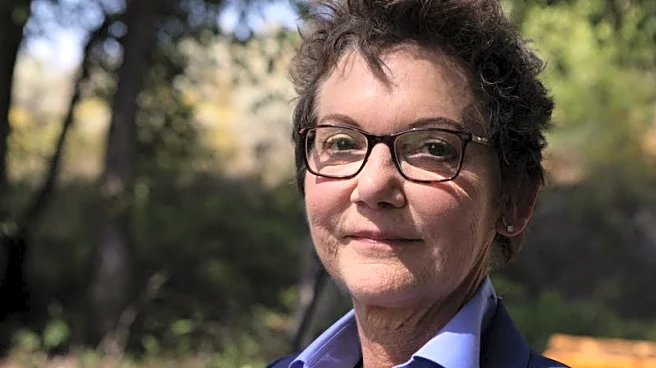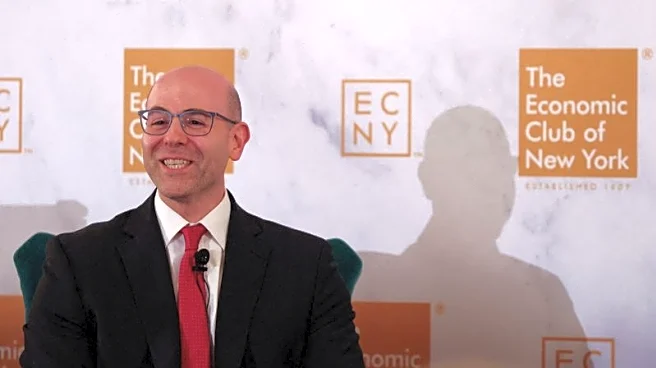By Ann Saphir and Padraic Halpin
SAN FRANCISCO/DUBLIN, Ireland (Reuters) -Citing worries about inflation and signs of relative stability in the labor market after two U.S. interest rate cuts this year, a growing number of Federal Reserve policymakers are signaling reticence on further easing, helping push financial market-based odds of a reduction in borrowing costs in December to near even.
As if to underscore that knife-edge decision, San Francisco Fed President Mary Daly - until now a firm supporter
of the Fed's rate cuts - on Thursday said a decision about four weeks ahead of the next policy meeting is "premature."
"I have an open mind, but I haven't made a final decision on what I think and I'm looking forward to debating with my colleagues," Daly said during an event in Dublin, Ireland.
The latest to nod to the need for a rate-cutting pause was Boston Fed President Susan Collins, who on Wednesday said she sees a "relatively high bar" for additional easing in the near term.
"Absent evidence of a notable labor market deterioration, I would be hesitant to ease policy further, especially given the limited information on inflation due to the government shutdown," Collins told a bankers conference in Boston, adding that the policy rate will likely need to stay on hold "for some time."
LACK OF KEY DATA COMPLICATES NEXT POLICY DECISION
The unusually blunt remarks from Collins, who voted for both of the Fed's rate cuts this year, suggest deepening divisions at the U.S. central bank and point to the lack of consensus around another reduction in borrowing costs. Fed Chair Jerome Powell flagged those challenges two weeks ago after the latest rate cut when he said another move at the December 9-10 policy meeting is "far from" assured.
With Collins' remarks, and guidance from the White House on Wednesday that, even with the reopening of the U.S. government, official inflation and labor market data may not be published in time for the Fed's next meeting, if ever, financial markets have backed away from previously firm bets on another quarter-percentage-point reduction in the policy rate next month.
Short-term interest rate futures, the best real-time gauge of financial market expectations for Fed policy, now reflect only about a 55% chance that the rate-setting Federal Open Market Committee will lower borrowing costs on December 10.
"Boston Fed President Collins' decision to speak out clearly against a December cut raises our level of concern about Powell's struggle to manage deep divisions within the FOMC and creates additional uncertainty over the path of rates," Evercore ISI Vice Chairman Krishna Guha wrote in a note on Thursday. "Her decision to go public with clear opposition to a December cut suggests she might well dissent if Powell tries to push it through."
Some data published by the private sector and derived from the Fed's own surveys may boost the argument for holding interest rates steady at the next meeting.
Torsten Slok, chief economist at Apollo, estimates the prices on 55% of items that make up the Consumer Price Index, the best-known measure of inflation, are rising faster than 3%.
The Fed has a 2% inflation target.
"This is the reason why it is difficult for the Fed to cut interest rates in December," Slok wrote on Wednesday.
(Reporting by Ann Saphir; Editing by Paul Simao)














